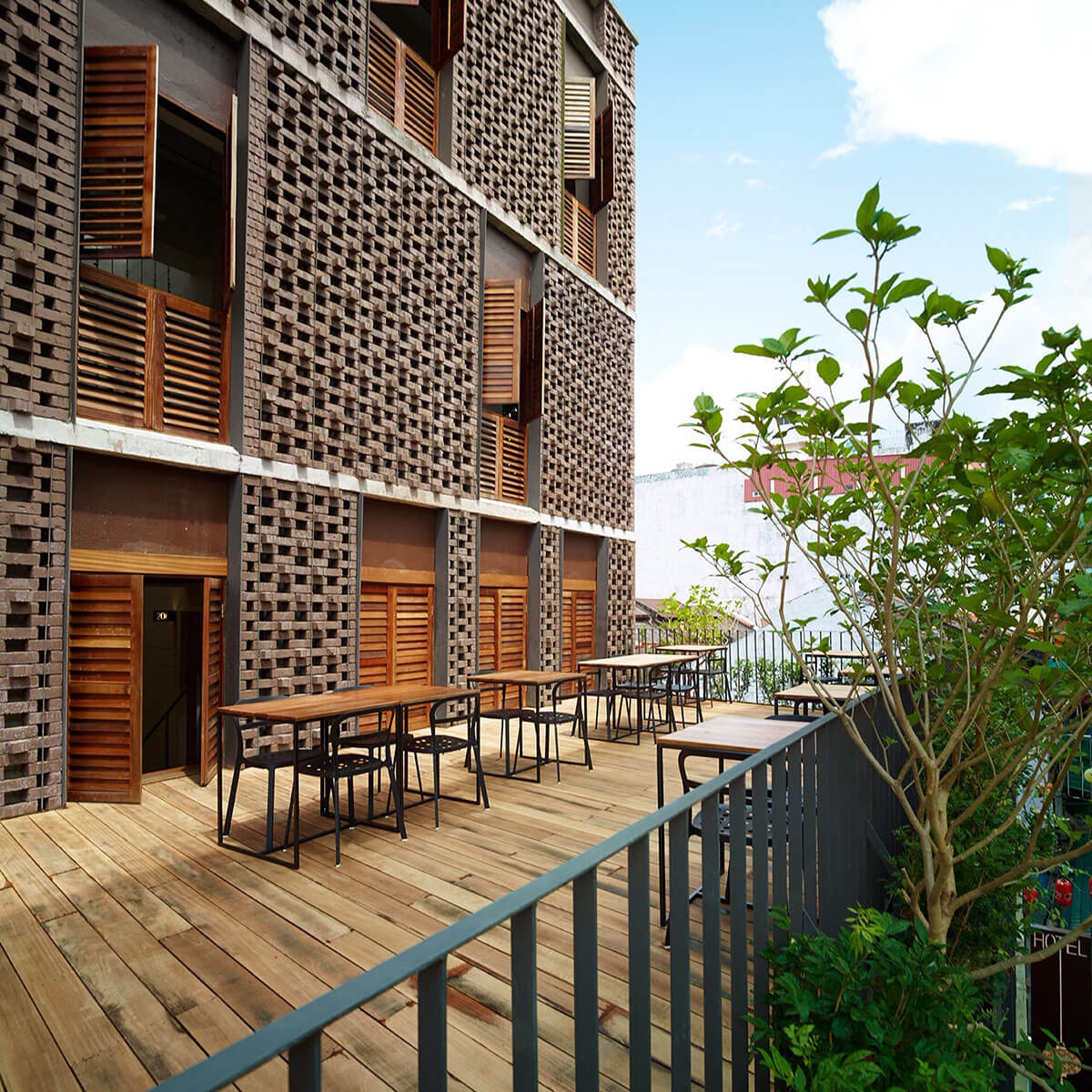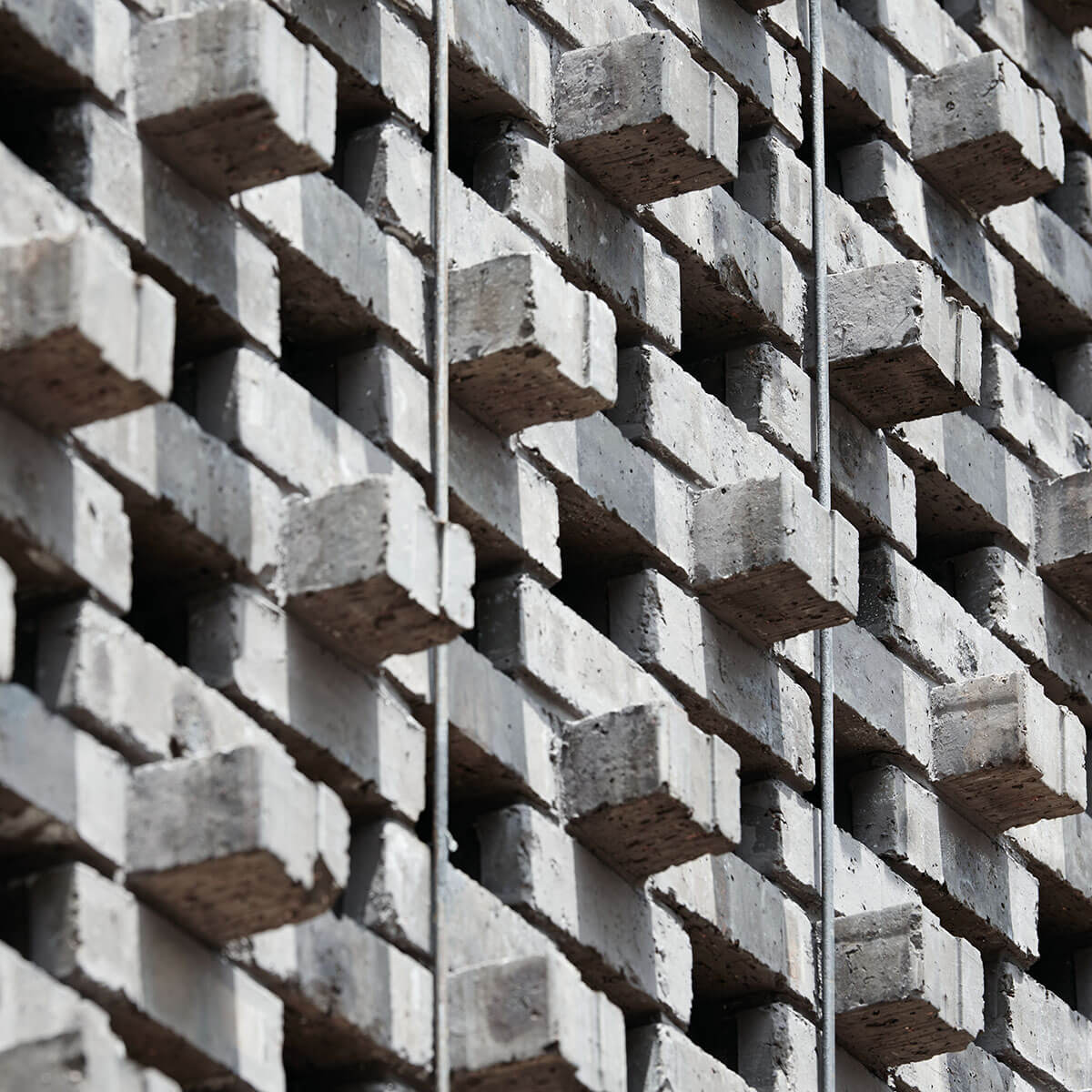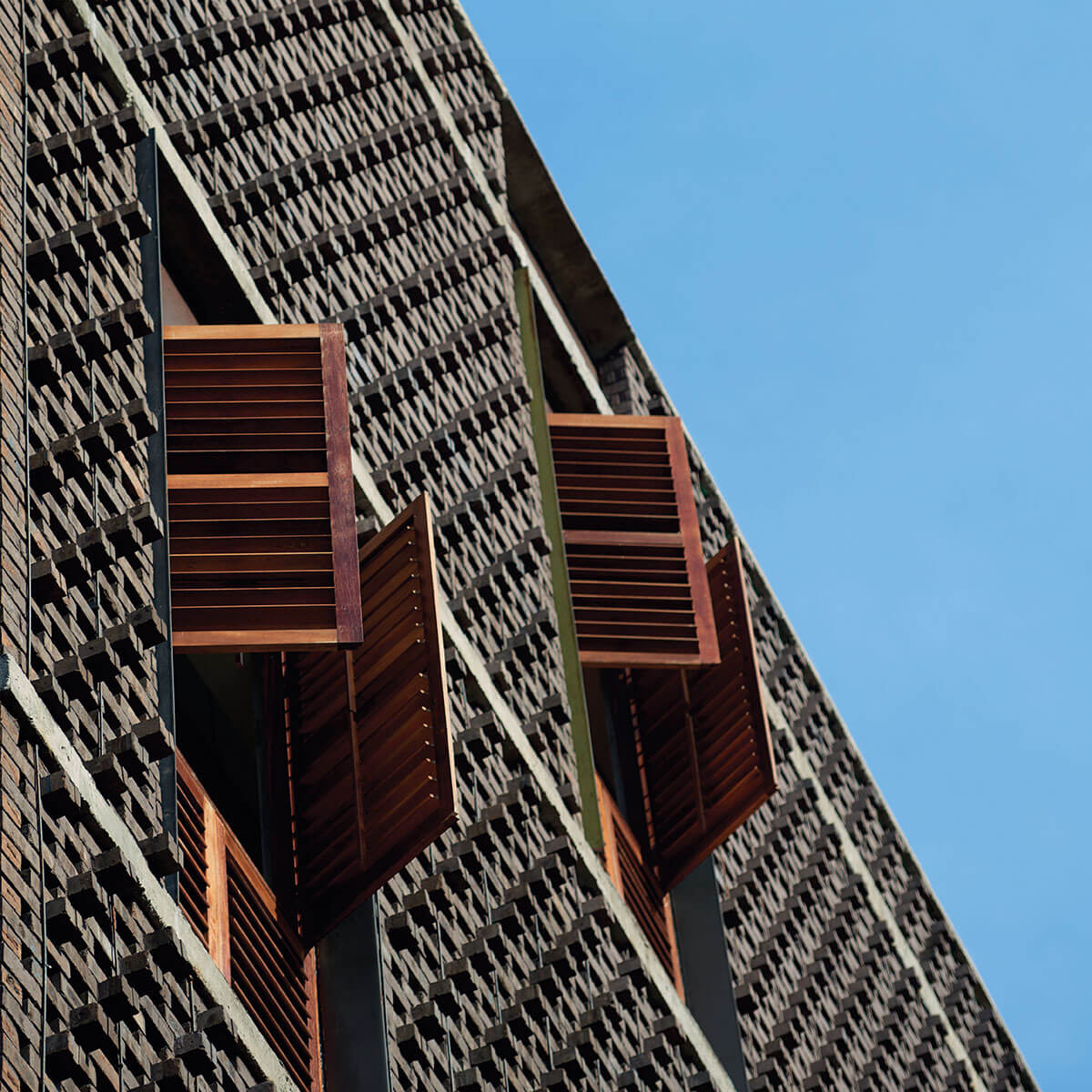Lantern Hotel / ZLGdesign
Lantern Hotel / ZLGdesign
Description
The design process for The Lantern Hotel took an extended period of time, beginning in 2012 with long periods of time spent in getting relevant approvals from local authorities, as well as tweaking and refining the program details and design, with the primary overriding concern of ensuring maximum cost-effectiveness throughout. The result is a hotel which houses 49 guest rooms, all with attached bathrooms, two dorms (each with six beds) and external bathrooms, facilities for breakfast, a centralized computer area, a locker area and an outdoor terrace for a remarkable project cost of only MYR4.2mil, including furnishing.
Sadly so, the previous existing shop houses on the site were demolished and replaced with a huge monolithic building of five floors, with little regard of its surroundings or heritage. As such, we were faced on one hand with an ‘out-of-proportion’ existing building mass and the client’s brief of maximizing the space with as many rooms as possible at the lowest budget possible; and on the other hand, design a comfortable hotel for guests that also responds to its surroundings, in particular the heritage and history of Petaling Street, in the most sensitive and empathic way possible.
Architectural Challenge
There were several other significant challenges in completing this project. The first was during the construction phase. With a bank operating on the first two floors and hawker shops on the ground floor, both of which could not be disturbed, carrying out building works as well as overall site logistics were a tremendous challenge. Secondly, this project represented the client’s first development; hence, there was a learning curve involved in moving the project along smoothly.
Throughout the design process, the biggest challenge was not to lose track of the initial idea- to create a central void/ courtyard space. We also wanted to introduce natural light into all floors, have all guest rooms face internally and the main corridor placed along the outer façade so that guests get to experience views outside.
Facade
The façade was designed to be less obtrusive, and to blend in harmoniously with the hustle and bustle of the surroundings. Locally manufactured, dark brown clay bricks from Johor Bahru were used. Several laying methods were studied to arrive at the final form that would allow for sufficient openings as well as provide the façade with a three-dimensional texture.
Existing windows were removed, and a new façade was added on top of the existing walls, either through the addition of timber louver shutter windows at the existing openings or clay brick walls throughout the opening. The openings for the timber louver shutters and edges of the clay brick walls were ‘framed’ by 10mm thick MS steel plates in micaceous ion oxide finish, with steel rod tiebacks added for additional safety.
By demolishing the slabs, the existing beams were exposed and together with the cantilevered glass boxes, create an animated and dynamic play in the void space. These beams were emphasized with their existing cored openings by adding lighting inside the openings, and painting two inner sides in orange and the other two sides in green, which creates a colored glow at night.
Interiors
The color scheme of green and orange was carried through to the rooms, where one side of the void has green curtains and the other has orange. The same was applied to one wall inside the rooms, one side wither has orange or green, blending in with furnishings in the room.
The edges of the void spaces were softened with plants/ creepers placed in hot dip galvanized planters at the corridor facing the void, as well as designed concrete planter boxes on the roof to allow plants to creep below the skylight along steel rods, adding to the natural shading from the sun once matured.
To add more texture and materiality, some plaster was removed from inside the corridor and staircase, exposing the existing bricks. The existing concrete floor in the corridor area was polished with some added color, giving it a warm and lively patina or texture. The void between the entrance staircase and the façade was previously boxed up and enclosed, having no natural light. This was opened up, creating a void where the natural light passing through the clay brick façade can flow into the space.
Being an open plan before, all walls for the guest rooms were added using concrete blocks, painted only. All rooms face the inner courtyard, with some rooms having a glass box intruding into the Page 3 of 3 void, a full height window or a lanai area at the long side façade on the second floor with a view towards Petaling Street. All rooms, except the dorms have an attached bathroom finished with mosaic tiles, a small niche painted in orange or green with a solo timber top, and a bamboo ladder that serves as a towel or cloth hanger. All rooms feature a specially-made timber bed frame that does not touch the floor. For the dorms, a double high bed design with plywood timber wall backing was employed. Being very small rooms ranging between 12 sqm to 18 sqm, we added a centralized space for lockers in all corridors using the same timber louver design concept, similar to the façade used for the locker doors.
Having the reception area on the second floor, we highlighted the main entrance at the ground floor with a red pendant lantern ceiling. Upon entering, there is a small foyer waiting area with a fixed concrete/ plywood hence before going up to the reception area on the second floor. This floor has 15 guest rooms, and all the basic public amenities like reception/ bar/ counter, chalkboard/ magnetic wall for notes and information, a computer area, a simple plywood shelf and tables/ chairs inside the courtyard. From this level, a steel/ timber staircase leads visitors to the outdoor terrace overlooking Petaling Street. The next two floors above are typical floors with 16 rooms each floor and one dorm each.















